Are you looking for a bird that lays a commendable number of eggs or do you want a meaty breed with a fleshy carcass? Or perhaps you are looking for a chicken breed that can do it all?
In that case, you should consider the dual-purpose New Hampshire Red chicken breed.
This article examines the features of this lesser-known chicken breed to help you determine if it is a worthy addition to your flock. Read on.
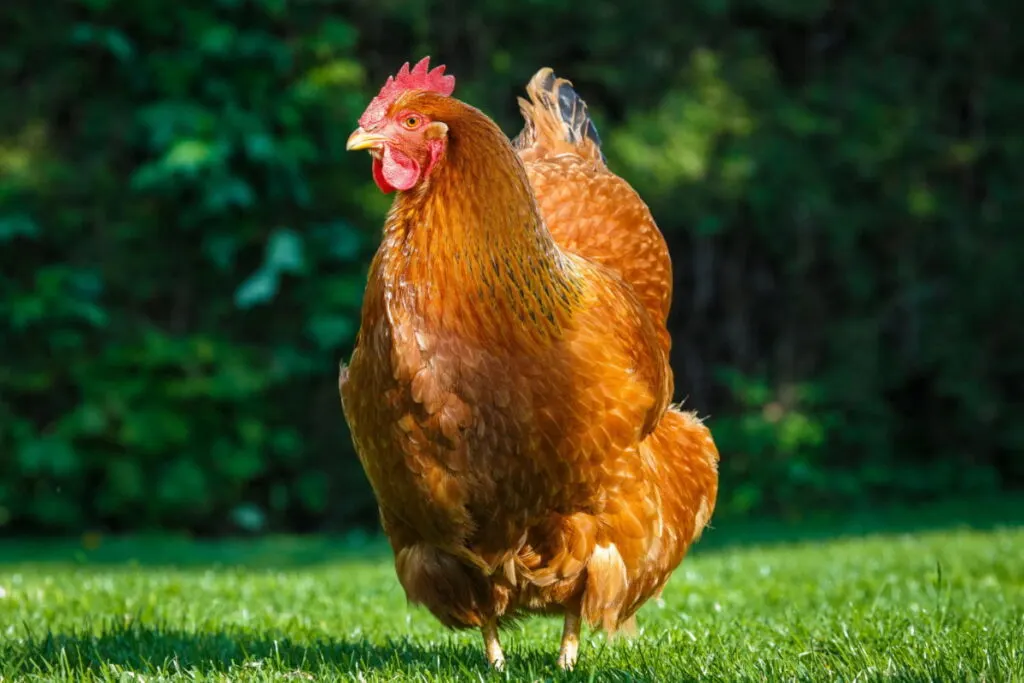
Table of Contents
History
Named after the place of its origin, the New Hampshire Red is a latecomer to the chicken world.
The breed came about in the New England region of New Hampshire and Massachusetts as a specialized strain of the Rhode Island Red chicken that was popular at the time.
In the early 20th century, poultry breeders in New Hampshire began selecting specific birds from their Rhode Island Red flock that feathered quickly and matured faster.
They also choose hens with good egg-laying ability, but their main focus was prolific meat production.
The responsibility of creating this breed was given to Professor “Red” Richardson, a researcher at the New Hampshire Agricultural Experiment Station located at Durham.
No other breed was used in the creation — only the selected Rhode Island Red birds were used in the breeding.
And due to the intensive selection criteria for early maturity, fast feathering, rapid growth, and vigor, a uniquely new chicken breed was formed.
The resulting breed was named New Hampshire, after one of the states where it was created.
The color was not a requirement when choosing birds for the breeding program, so the resulting chicken had a somewhat lighter red color than the Rhode Island Red stock.
And just as the breeders had envisioned, the resulting New Hampshire breed was an excellent meat producer and served as an important source of protein during World War II.
The demand for poultry meat increased after the war and the New Hampshire Red breed was widely adopted by poultry farmers to ensure there was enough chicken meat to feed America.
The New Hampshire Reds were even promoted in the “Chicken of Tomorrow” show, a popular chicken contest that was circulating throughout the country.
Although they did not win the contests, New Hampshire Reds became one of the pioneers of the broiler industry.
They were also used to create the Delaware chicken breed, another brief sensation in the broiler industry.
In 2018, students at Canaan Elementary School presented a petition to the Governor of New Hampshire to have the chicken recognized as the state’s official bird.
The Governor signed the petition into law and the New Hampshire Red is now the designated official poultry of the state.
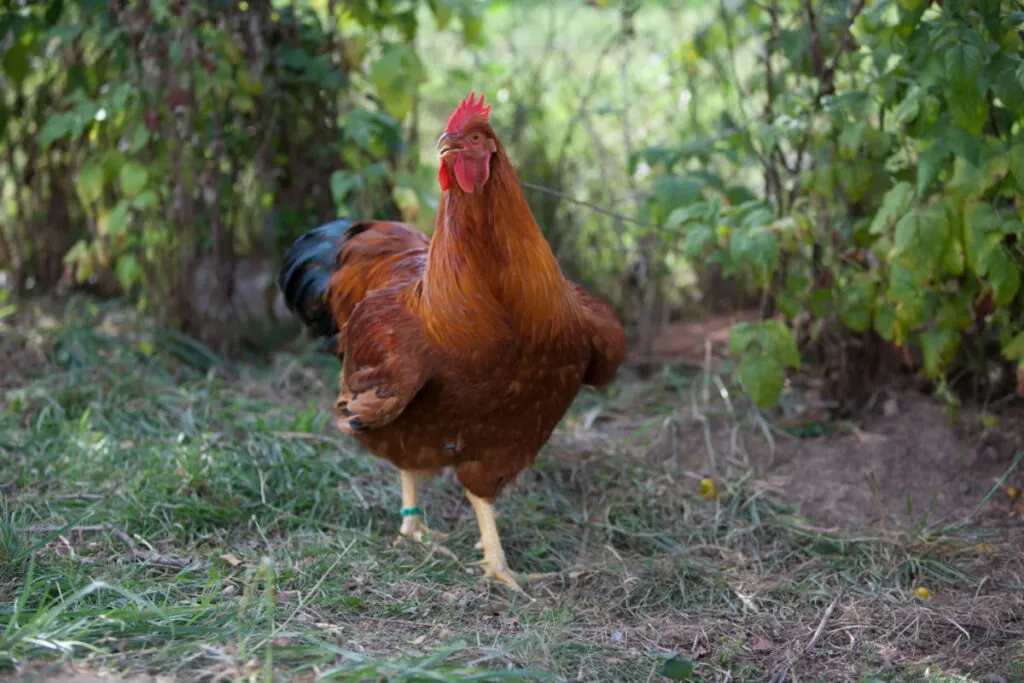
Breed Standard
It took a lot of time and several generations of chicken for the New Hampshire Red chicken breed to be significantly different from its forebears, the Rhode Island Red.
Researchers started working on this breed in 1910 and achieved a significant breakthrough, nearly a decade later, in 1918.
The breed was refined further in the following years and finally added to the American Poultry Association (APA) in 1935.
Its bantam variety was also recognized by the American Bantam Association (ABA) and added to the ABA Standard of Perfection in 1960.
The ABA classifies the bantam variety as a single-comb, clean-legged bird.
Lastly, the breed has also been recognized by the Poultry Club of Great Britain (PCGB) as a soft-feathered, heavy chicken breed.
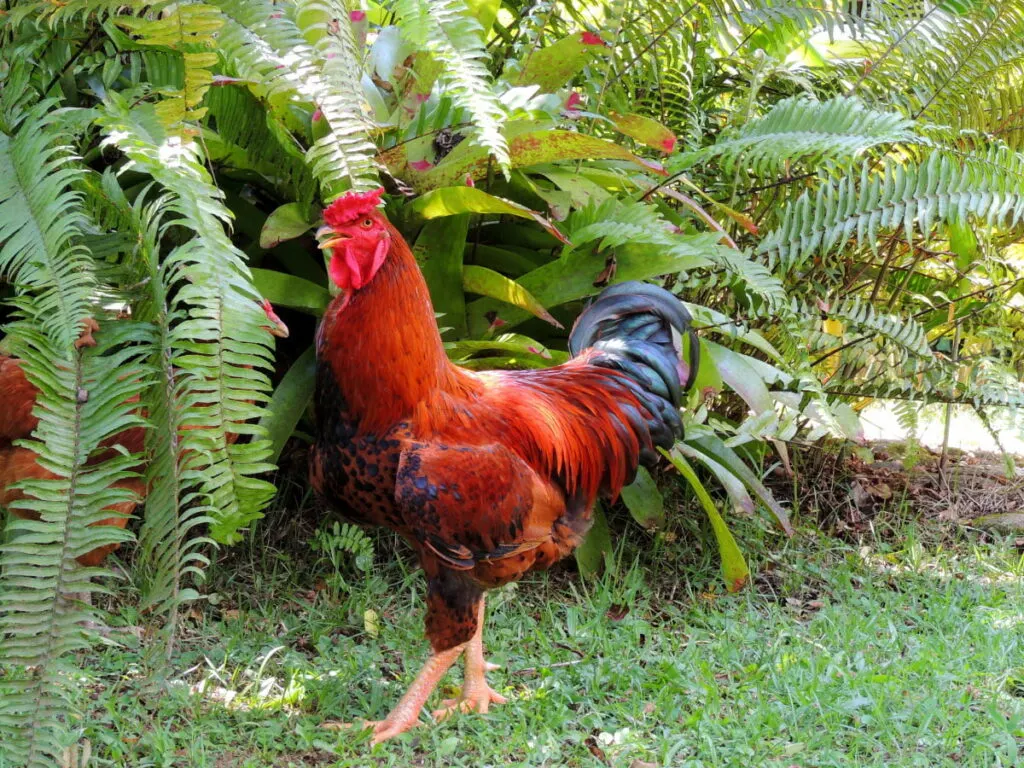
Appearance
The New Hampshire Red hen is a medium-sized bird with reddish-brown plumage.
It looks similar to its forebear the Rhode Island Red but with a more triangular body shape.
The birds are generally plump with a deep and broad body that gives a meaty carcass. They also have beautiful yellow skin which makes them suited for roasting.
New Hampshires are well-feathered with none of their skin visible.
The feathers have a chestnut red color although they may feature pale yellow highlights due to sun exposure that bleaches the feathers to a lighter shade.
Moreover, the pin feathers have a light salmon color that helps maintain the visual appeal of the bird’s carcass.
Both the roosters and hens have black tail feathers while the hens may have black-tipped feathers on their necks.
The eyes are orange, and the beak is reddish or horn colored.
They have a single medium-to-large comb that flops a bit in the females. What’s more, the comb is red, just like the wattles and ear lobes.
The shanks are clean and have a red line that runs to the toes. The shanks and four toes of a New Hampshire are yellow like its skin.
Size
How big can New Hampshire Red chickens get? The table below summarizes the standard weights of these birds.
| Chicken | Weight (lbs.) |
| Rooster | 8.5 |
| Hen | 6.5 |
| Cockerel | 7.5 |
| Pullet | 5.5 |
| Bantam Cock | 2.125 |
| Bantam Hen | 1.875 |
Uses
The New Hampshire Red is a dual-purpose chicken breed kept for its high-quality meat more than eggs.
Backyard chicken enthusiasts also keep them for their attractive looks, general robustness, extended egg-laying ability, and easy-going temperament.
Meat Production
As you can see from its standard weight, the New Hampshire is a medium to large chicken breed that packs a lot of meat.
The birds dress a beautiful, plump carcass which makes them perfect for roasting or broiling.
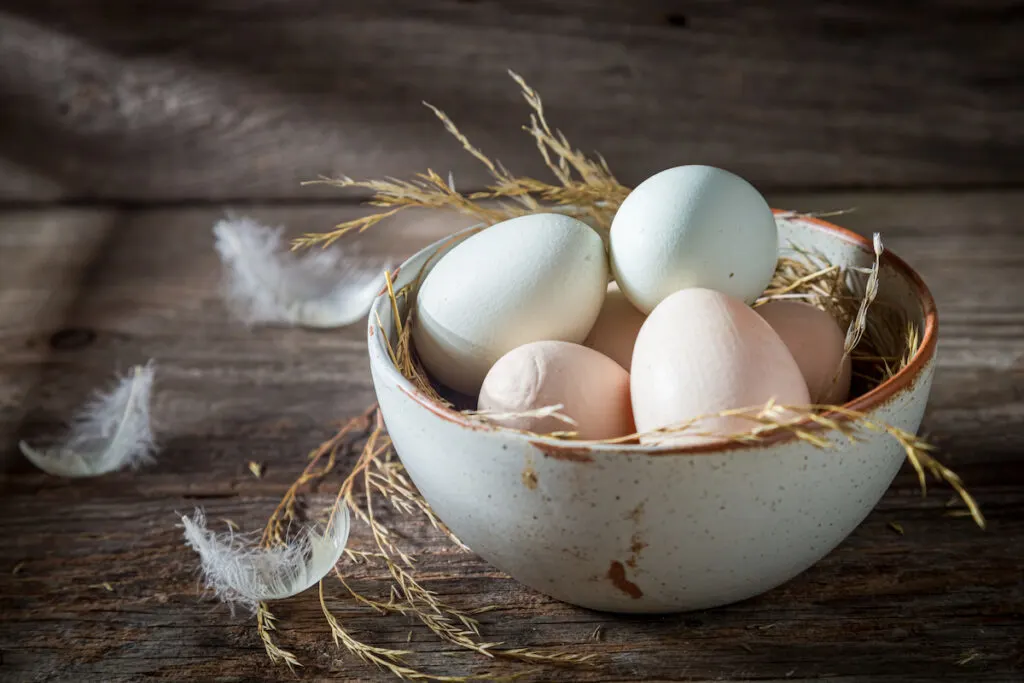
Egg Production
The New Hampshire chicken breed is not only revered for its meat production.
New Hampshire hens are decent layers, producing about 200 – 220 large brown eggs per year, which translates to about three eggs per week.
The hens start laying eggs at five months.
Temperament
New Hampshires are friendly chickens and make great pets because they are quite easy to tame.
That being said, they are quite energetic and also happen to be very food aggressive.
They are not afraid to push and shove other coop mates to get to the food, which is a bad thing if there are other docile breeds in your flock.
To reduce this bullying behavior, it’s advisable to have several feeding stations set far apart from each other to ensure the chickens don’t get in each other’s way when feeding.
Cockerels can also get aggressive when they don’t have enough hens to mate with.
As such, the only way to maintain harmony and avoid fights is to ensure you don’t have too many cockerels in your New Hampshire Red flock.
Broodiness
New Hampshire hens are good sitters and brood frequently. They are also good mothers when allowed to hatch their eggs.
Broody New Hampshires are also known to accept other chicks, although this varies from hen to hen.
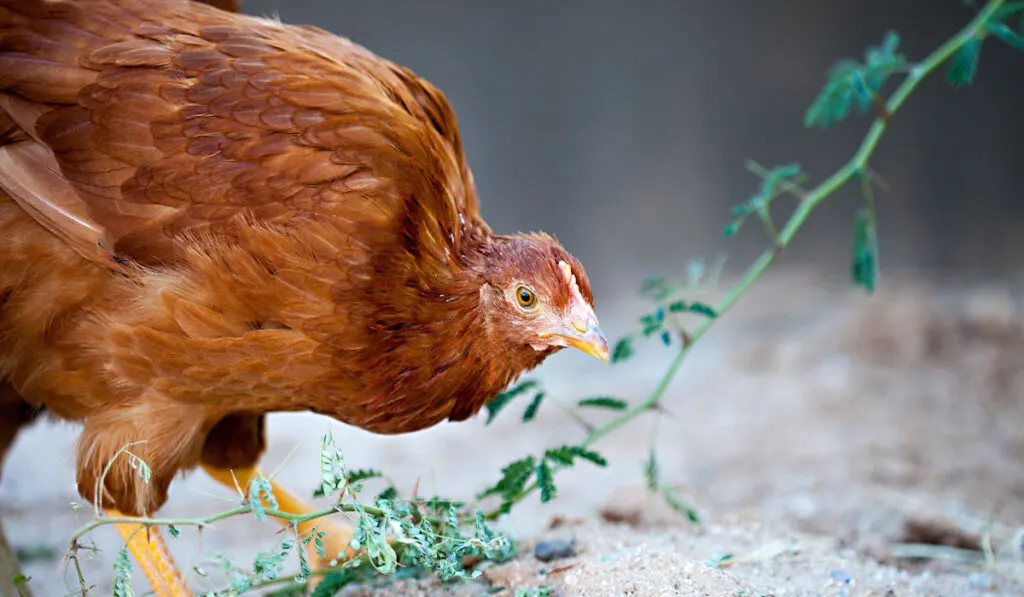
Nutrition
Start your New Hampshire chicks with growers’ mash because of its high protein concentration to support their growth.
Keep them on growers’ mash till they reach six weeks then move them to chicken pellets up until 18 weeks.
At this point, your hens need more nutrients to support egg production, so start feeding them layers’ mash with at least 16% protein concentration.
Gradually increase the quantity of feed you give your chickens as they grow. You can place the feed in a feeder for them to eat as they like or you can give it to them at specific times.
New Hampshires also love to forage bugs and grubs. As such, you can reduce your feed bill by allowing your chicken to free-range and eat what they find outside.
You should also ensure your chickens get enough fresh water to stay hydrated.
They also need grit to support egg production, so ensure there’s enough of it for your beloved chickens.
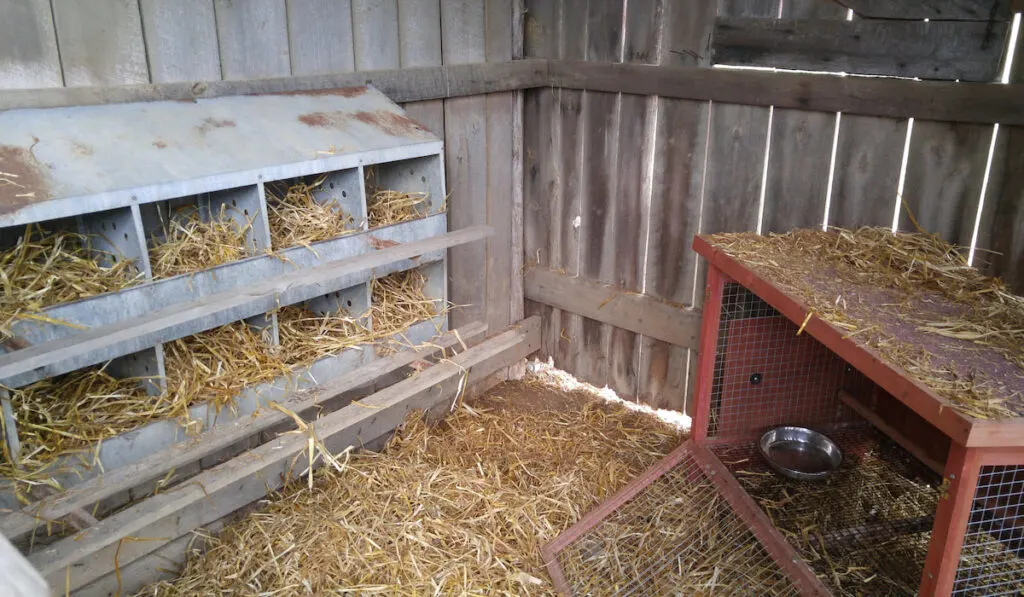
Housing
Since New Hampshires are medium-sized, each mature bird needs at least four square feet of space in a coop. The coop should have a wooden box for laying eggs and a perch for sleeping.
They also need a minimum of eight square feet in a chicken run to ensure they have enough space to roam and forage.
The birds are not flighty, hence don’t require a large fence to contain them. Ideally, a fence of six feet is enough for your New Hampshire Reds.
Common Health Issues
The New Hampshire Red is a robust chicken breed with no major health issues. Just perform the necessary pest checks and take the necessary measures to keep your birds free of parasites.
The birds can also tolerate cold weather and can be found foraging out in the snow as other birds huddle in the coop.
However, their wattles and comb can freeze in extreme cold. If you’re concerned about frostbite, you can cover them with an oil-based cream like Vaseline.
With proper care and love, New Hampshires can live up to eight years.
Final Thoughts
The New Hampshire Red breed makes a great choice for you or anyone looking to raise dual-purpose chickens.
The birds are quick to mature and lay a decent average of three eggs every week. They also have a meaty carcass, which can weigh more than 8 pounds for a mature rooster.
The hens are good mothers and make great pets because they are easy to tame.
Resources
- https://en.wikipedia.org/wiki/New_Hampshire_Red
- https://www.poultryclub.org/breeds/chickens/soft-feather-heavy/new-hampshire-red/
- https://breeds.okstate.edu/poultry/chickens/new-hampshire-red-chickens.html
- https://www.thehappychickencoop.com/new-hampshire-chicken/
- https://livestockconservancy.org/heritage-breeds/heritage-breeds-list/new-hampshire-chicken/
- https://www.backyardchickencoops.com.au/blogs/learning-centre/breed-profile-new-hampshire
- https://www.poultrypages.com/new-hampshire-red-chicken/
- https://a-z-animals.com/animals/new-hampshire-red-chicken/#single-animal-text
